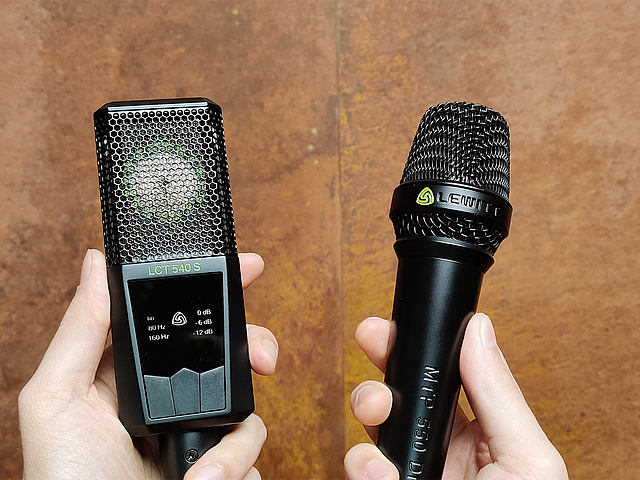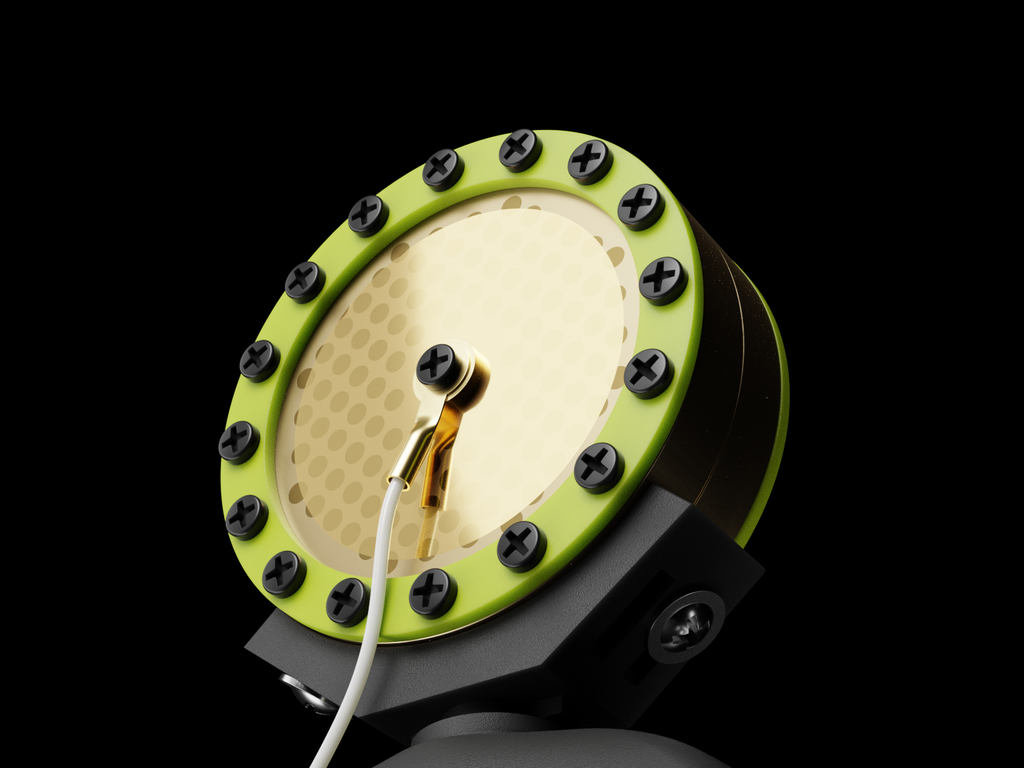
Blog
True love for great sound unites us.
Blog
True love for great sound unites us.

There's a sheer endless amount of threads addressing the question, Which microphone is better, dynamic or condenser?
This blog makes you easily understand when it makes sense to use a dynamic or a condenser microphone. We have prepared a few examples that tell you why you can use one or the other.
One thing in advance: both types of microphones turn sound waves into an electric signal and can be used for recording, streaming, podcasts, and live applications.
They differ in their respective transducer principles to turn sound into a signal, which leads to different (common) use cases for the two types of microphones.
Click here, if you want to learn how a microphone works.
A condenser microphone (usually) uses a diaphragm that moves according to the sound to turn sound into an electric signal. Some people also refer to condenser microphones as capacitor mics. Here's why.
The membrane of the condenser microphone detects sound pressure level changes. Through the differences in capacitance between two electrically charged plates and the help of internal electronics, the condenser microphone converts sound into an electrical signal. That is why XLR condenser microphones need 48V phantom power to work.

With their higher sensitivity, condenser microphones are more suitable for sources that need to be reproduced in great detail or are further away. In general, you can say that recordings created with a condenser microphone sound cleaner compared to dynamic microphone recordings.
The most relevant difference between condenser and dynamic microphones is sensitivity. The difference in sensitivity largely determines the intended use of the two types of microphones.
Our best selling condenser microphones
Dynamic microphones use a moving coil to convert sound into voltage.
With their low sensitivity, dynamic microphones are used for loud sources. With a dynamic microphone, the gain on your preamp needs to be higher to get the same signal strength that you would get with a condenser microphone.
This weaker signal-to-noise performance of the dynamic microphone does not fall into weight when recording high sound pressure levels or with close-mic positioning, two use cases common for dynamic microphones.

Dynamic microphones are sturdy and don't need phantom power or any other external power to work.
Our best selling dynamic microphones
Examples
Let’s take a look at some examples and analyze the reasons why we would use one mic or the other. But before we do that.
But first, let's have a listen to a vocal recording. The first is done with a dynamic microphone (MTP 550 DM), the second one with a condenser microphone (MTP 940 CM). Can you hear the difference in the details?

Typical choice: Condenser
There's a high chance that you, like most studio engineers, will be using a condenser microphone to record vocals.
This has at least these reasons.
Great microphones for vocal recordings

Typical choice: Condenser
Both microphone types, dynamic and condenser, are suitable to record acoustic guitar. Still, there are some significant differences in what the result sounds like.
The membrane of the condenser microphone reacts much quicker to sound and reproduces the higher frequencies more accurately.
The condenser microphone has a much better high-frequency response or transient response.
Great microphones for guitar recordings
A better transient response leads to an increased amount of details in your acoustic guitar recording.

Typical choice: Dynamic
To increase definition, it makes sense to record parts of the drum kit at a close. The best examples are kick and snare. Dynamic microphones are your usual candidates for drum applications.
This has the following reasons.
Double rim shots on a snare can produce sound pressure levels of up to 150 dBSPL. Without a pre-attenuation (pad), most condenser microphones will clip, or at least the output will be too high for the equipment next in line, e.g., your standard USB audio interface.
Great microphones for drum recordings

Typical choice: Condenser and dynamic
As with vocal recordings, podcasts and voice-over recordings sound great when you use a condenser microphone. The condenser microphone reproduces a lot of details of your voice.
Still, many broadcast studios like radio stations are using dynamic microphones for their live sessions.
Please note that a dynamic microphone is not better in isolating your voice or works "better" in an untreated room. The main difference between the two microphones is, as stated before, the difference in sensitivity and high-frequency accuracy.
Great microphones for voice and podcast recordings
Typical choice: Dynamic
Due to their transducer principle of using a moving coil, dynamic microphones are basically indifferent to high sound pressure levels. With the low sensitivity, you won't have problems with overloading your preamp's input.
Now, one could ask, can't we just turn down the volume on the amplifier and record the not so loud signal? Of course, we could!
It's not that we typically use a dynamic microphone because the condenser microphone can't handle the high sound pressure levels, but simply because
If you have both microphone types at hand, see if you create a fuller and more personal tone by using both. Experiment with the position in front of the cabinet and always check that they are in phase.
If you have both microphone types at hand, see if you can create a fuller and more personal tone by using both.
Great microphones for amp recordings